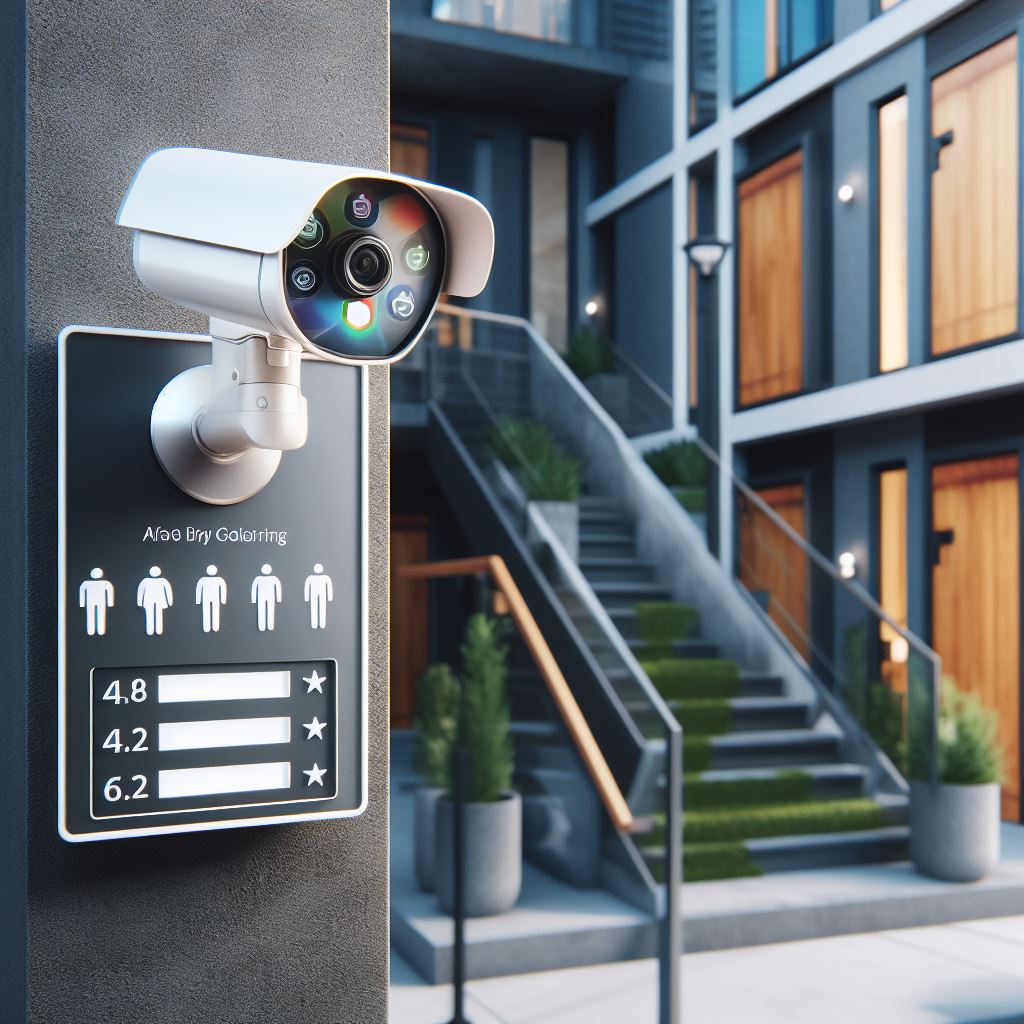How to Assess Crime Rates Before Renting Apartments

Are you in search of the perfect apartment? Before you sign that lease, it’s crucial to assess the crime rates in the area. But fear not, for there are ways to arm yourself with the necessary data.
Dive into online crime databases, consult neighborhood statistics, and utilize crime mapping tools. Don’t forget to chat up local law enforcement and seek insights from current residents.
By following these steps, you can make an informed decision and find a safe haven to call home.
Key Takeaways
- Specify the particular online crime database you want to explore.
- Check neighborhood crime statistics to get a localized understanding of crime rates.
- Utilize crime mapping tools to compare crime rates between different neighborhoods.
- Talk to local law enforcement and seek insights from current residents for valuable information about crime rates.
Researching Online Crime Databases
To research online crime databases, start by using an article determiner such as ‘a’ or ‘an’ to specify the particular database you want to explore. It’s crucial to rely on credible sources that provide comprehensive and up-to-date information on crime rates.
Online crime databases gather data from various sources, including law enforcement agencies, court records, and crime reporting systems. These databases offer a wealth of information, allowing you to assess crime rates in specific neighborhoods, cities, or regions.
When using these databases, it’s important to note that crime rates can vary over time and across different areas. Therefore, it’s advisable to look at trends and compare crime rates from multiple sources to obtain a more accurate picture.
Additionally, some online crime databases offer interactive maps and visualizations that can help you easily navigate and understand the data.
Checking Neighborhood Crime Statistics
When researching online crime databases, you can also check neighborhood crime statistics to get a more localized understanding of crime rates. By examining the crime statistics specific to the neighborhood you’re considering, you can gain valuable insights into the safety of the area. These statistics provide data on various types of crimes, such as property crimes, violent crimes, and drug-related offenses, which can help you assess the overall safety of the neighborhood.
Neighborhood crime statistics are often available through local police departments or online platforms dedicated to providing crime data. These statistics are usually presented in the form of tables or charts, allowing you to easily compare crime rates between different neighborhoods. By analyzing these statistics, you can identify any patterns or trends that may exist, such as an increase or decrease in crime over time.
When examining neighborhood crime statistics, it’s important to consider the size and population of the area. Smaller neighborhoods may have lower crime rates simply due to their size, while larger neighborhoods may have higher crime rates due to a larger population. Additionally, comparing the crime rates of different neighborhoods can give you a benchmark to determine whether a particular area is relatively safe or not.
While neighborhood crime statistics can provide valuable information, it’s essential to remember that they’re just one piece of the puzzle. It’s recommended to combine this data with other sources of information, such as online crime databases and personal observations, to make a well-informed decision about renting an apartment in a particular neighborhood.
Utilizing Crime Mapping Tools
You can access valuable information about crime rates in a neighborhood by utilizing crime mapping tools. These tools provide an easy and convenient way to analyze crime data and make informed decisions about where to live. Here are three reasons why crime mapping tools are essential in assessing crime rates before renting apartments:
- Visual Representation: Crime mapping tools offer visual representations of crime data, allowing you to see the distribution of crimes in a specific area. By looking at the map, you can identify high-crime areas and make comparisons between different neighborhoods.
- Detailed Crime Information: Crime mapping tools provide detailed information about specific crimes, including the type of crime, date, and location. This data helps you understand the nature and frequency of crimes in a particular neighborhood, enabling you to evaluate the safety of the area.
- Historical Trends: Crime mapping tools often include historical crime data, allowing you to assess the trends and patterns of criminal activity over time. This information helps you identify whether crime rates are increasing or decreasing in a specific area.
Talking to Local Law Enforcement
Contact local law enforcement to gather information about the safety of the neighborhood you’re considering renting an apartment in. Speaking directly with the local law enforcement can provide valuable insights into the crime rates and overall safety of the area. Law enforcement agencies usually have access to comprehensive data on crime incidents and can provide you with accurate and up-to-date information.
When contacting local law enforcement, it’s essential to be prepared and ask specific questions. Inquire about the types of crimes that commonly occur in the neighborhood and the frequency of these incidents. Request information on recent trends in crime rates, such as whether they’re increasing or decreasing. Additionally, ask about any ongoing community initiatives or programs aimed at reducing crime and enhancing safety.
Remember that law enforcement officers are professionals who deal with crime on a daily basis, so their insights can be valuable. However, it’s crucial to remain objective and consider multiple sources of information when assessing the safety of a neighborhood.
While law enforcement can provide useful data, it’s also beneficial to consult other resources, such as crime mapping tools and local news outlets, to obtain a well-rounded understanding of the area’s safety profile.
Seeking Insights From Current Residents
To gain valuable insights about the safety of the neighborhood, consider reaching out to current residents for their perspectives on crime rates. They can provide firsthand experiences and observations that can help you make an informed decision before renting an apartment. Here are three reasons why seeking insights from current residents is crucial:
- Local Knowledge: Current residents have a deep understanding of the neighborhood and can provide valuable information about crime rates. They can share their experiences and observations, giving you a realistic picture of the safety situation in the area.
- Real-Time Updates: By talking to current residents, you can get up-to-date information about any recent crime incidents or trends. This can help you assess whether crime rates are increasing or decreasing over time, allowing you to make an informed decision about renting an apartment.
- Personal Safety Tips: Current residents can also provide you with practical safety tips to navigate the neighborhood. They may be aware of specific areas or times to avoid, or suggest security measures you can take to protect yourself and your belongings.
Frequently Asked Questions
Can I Rely Solely on Online Crime Databases to Accurately Assess Crime Rates in a Neighborhood Before Renting an Apartment?
You can’t rely solely on online crime databases to accurately assess crime rates before renting an apartment. They may not provide a complete and up-to-date picture of the neighborhood’s safety. Consider other sources like local police reports and talking to residents.
How Frequently Are Neighborhood Crime Statistics Updated, and How Reliable Are These Updates?
Neighborhood crime statistics are updated frequently, usually on a monthly or quarterly basis. These updates are generally reliable, but it’s always a good idea to cross-reference with other sources for a more accurate assessment.
Are There Any Limitations or Shortcomings of Using Crime Mapping Tools to Assess Crime Rates in a Particular Area?
Crime mapping tools, while helpful, have limitations. They may not capture all crimes, especially unreported ones. Additionally, they may not consider other factors like socioeconomic status. It’s important to use them as part of a broader assessment of crime rates.
What Specific Questions Should I Ask Local Law Enforcement Authorities to Gather the Most Accurate Information About Crime Rates in a Neighborhood?
To gather accurate information about crime rates in a neighborhood, ask local law enforcement specific questions. You should inquire about recent crime trends, types of crimes, and the effectiveness of policing strategies.
How Can I Ensure That the Insights I Receive From Current Residents About Crime Rates in the Area Are Unbiased and Reliable?
To ensure unbiased and reliable insights from current residents about crime rates, ask open-ended questions and encourage them to provide specific examples or data. This approach promotes objectivity and helps you make informed decisions about renting apartments.



